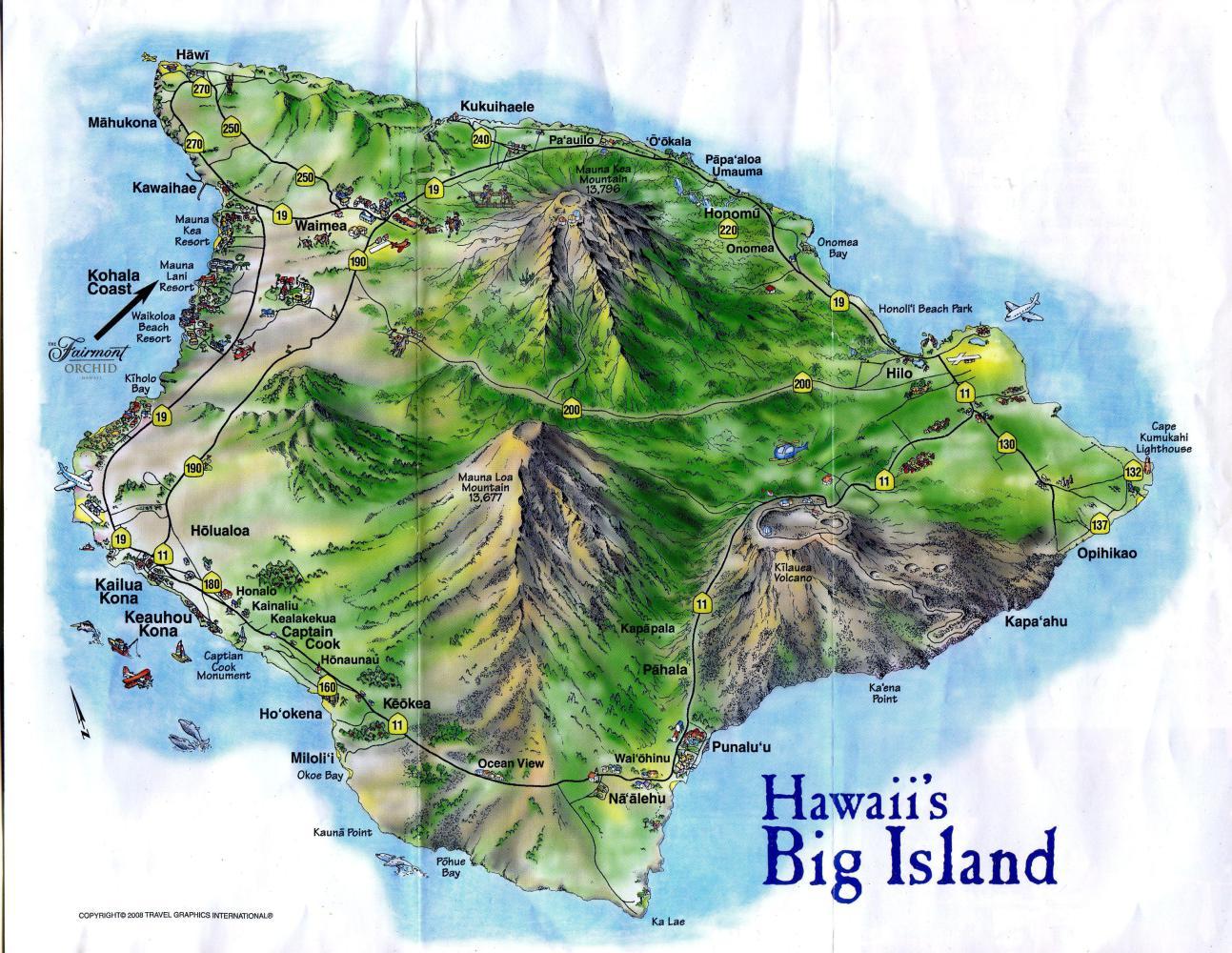January 2, 2015
What Do We Still Like About Hawaii
To explain what we still like about Hawaii we need to check back on what attracted us to Hawaii in the first place. Our last year's journal, Grampies Go Hawaiian blithered on about that at some length. It would be worth checking that out (by clicking on the blue bit above) since Hawaii truly is one of the most interesting places on the planet, particularly for its climate variations and for its geology.
To put it in a nutshell, the Big Island of Hawaii has five volcanoes, one still very active, one the site of many astronomical observatories, and with past lava flows very much part of the landscape from at least one of the others. Combined with the prevailing north east winds, the volcanoes heights create many ecozones - from desert to jungle, and all within a circumference of about 500 km.
From a cycling point of view, there are indeed some areas of fairly high traffic, but most of the island is fairly quiet. There are hills to tackle too, but to be fair we are not talking about the Alps or the Rockies here.

| Heart | 0 | Comment | 0 | Link |
Last year, a big source of interest, and concern, was a lava flow originating at the Puʻu ʻŌʻō vent of the Kilauea volcano. This sent a finger of lava straight at the town of Pahoa, in the Puna region. We followed this closely before we left, and cancelled a booking we had in Pahoa. When we got there, we cycled over to check on the lava, but the national guard prevented us from getting very close.
After we left Hawaii last time, the lava stalled, and businesses and people that had evacuated were able to return. So this time we have a booking at a motel in the middle of Pahoa. We will be interested to go look at the point of the lava's closest advance, and we will take the chance to cycle in the Puna region, which we had avoided before.
Another area that we did not get to last time was the summit region of Mona Kea volcano. This is the location of an array of astronomical observatories. In all there are more than two dozen individual telescopes up there. We do not intend to cycle up, and also rental cars are not permitted on the steep and dangerous road. But many tour operators leave from both the Kona and Hilo sides of the island, and will take you up there. Only thing, the cost is about $200 per person. We will try to work ourselves up to plunking down that kind of money, for a closer look at the stars.

| Heart | 0 | Comment | 0 | Link |
Update: There is a selection of tour operators who can take you up Moana Kea, for those $200. But if you are staying at Arnott's Lodge in Hilo, Arnott's will take you for $130. At first we thought this was not as good a deal as one might think, because you have to stay two nights at Arnott's, and it seemed to be $100 per night for the room. But now we found a room at Arnott's for $70. That seems to have tipped the balance so we are going for it!
We are not sure quite what to expect. Lately I have developed an interest in some aspects of astrophysics. That amounts mostly to watching Cosmos and Cosmos II on Youtube! The presenters - Carl Sagan and Neil deGrasse Tyson are quite mesmerizing. Maybe Moana Kea will be a chance to get a little closer to what they have been talking about. We'll see.
| Rate this entry's writing | Heart | 0 |
| Comment on this entry | Comment | 0 |
